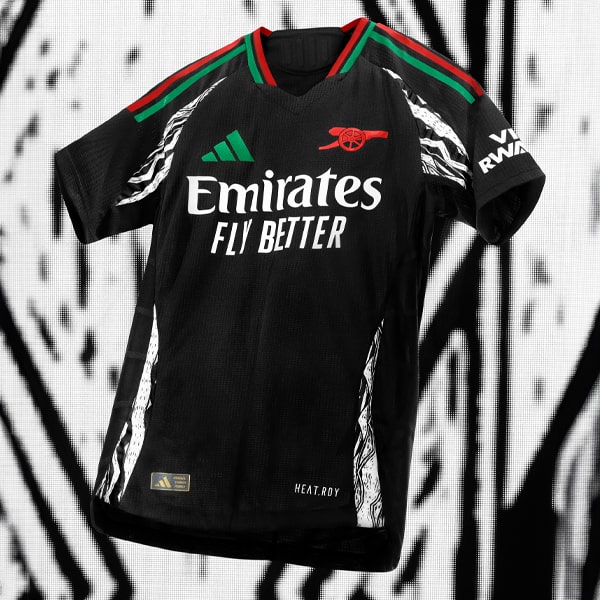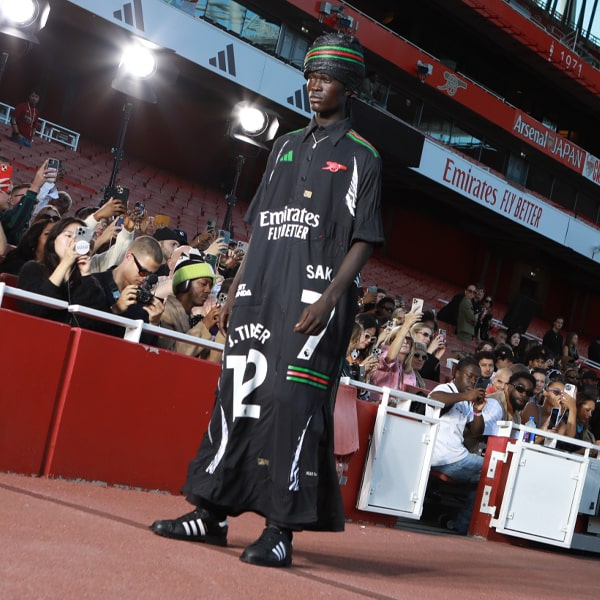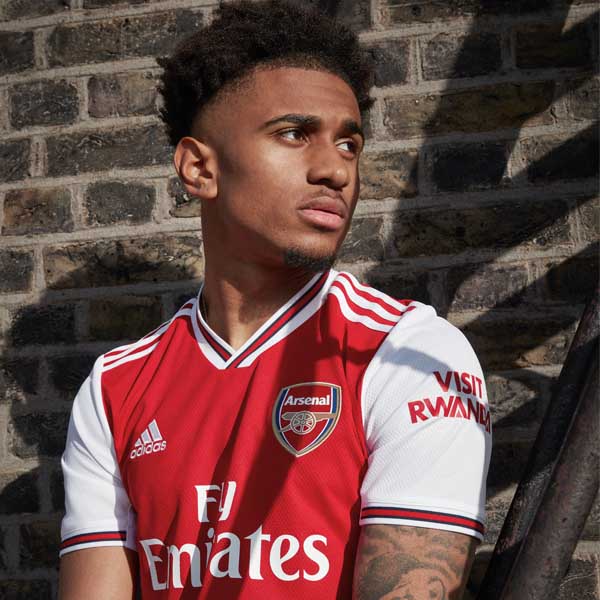Evolving from Barbican talk to impressive book, co-editor Dr Clive Chijioke Nwonka has pinpointed the strong affinity Black people have with the North London club, which inspired recent jersey designs.
Part of the joy of reading Black Arsenal – a highly visual 306-page anthology presenting enlightening perspectives on modern Black British cultural history – is the collective validation. Whether you’re Black and see yourself in the Ian Wrights, Kanus, Thierry Henrys, Rachel Yankeys, and Bukayo Sakas of this world or not, define yourself as a diehard Gooner through thick and thin or not, have experienced Highbury and the Emirates live or not, you’ve probably envied Arsenal’s swag, celebrity fans, and seemingly utopia-like multiculturalism. Lord knows I have as a Chelsea fan, unable to wear recent Jamaica and Africa-inspired kits (being both Jamaican and Nigerian) without scraping off the club crest. I involuntarily nod along as Baroness Lola Young ponders improvements in the Black female football experience with Lerina and Sophia in one chapter, and co-editor Dr Clive Chijioke Nwonka unpacks significant TV and strategic digital milestones in others, flinching when Gail Lewis recalls Arsenal crushing Chelsea at home in May 2023.
Successfully expanding the sold-out ‘Black Arsenal: Race, Cultural Memory and Black British Identity’ public talk that Nwonka gave at the Barbican in 2022 into a book that’s the first of its kind but not exhaustive is no mean feat. Black Arsenal is the UCL Film, Culture, and Society Associate Professor’s third book and he writes five out of 28 chapters himself, bringing on his friend, writer and curator Matthew Harle, to co-edit. Lighter and more colloquial, the tone jumps from academic to poignant to fly-on-the-wall when trying to pinpoint exactly what this abstract theory and tangible feeling is. Of all the contradictory Black Arsenal definitions and manifestations gathered, the one on page 136 makes the most sense to me: “the club has become an expansive space of Black identification and the recognition of integrated difference, while remaining, in many ways, indifferent to this difference.” Why wouldn’t people flock somewhere safe, inclusive, and authentic in a sometimes racist sport?

Dr Clive Chijioke Nwonka
The opportunity to video-call Nwonka for new insights was too good to pass up, especially as the revelation of his Liverpool allegiance doubles as a disclaimer if Black Arsenal’s objectivity is challenged. But it shouldn’t be because, while the well-versed academic does express his personal reverence for John Barnes and lifelong proximity to Arsenal fans, he also passed the pen to the North London club’s legends and community leaders, plus the bonafide cultural experts he felt were most qualified including Ian Wright and Ezra Collective. “Amy Lawrence is an Arsenal genius,” Nwonka declares. “I was going to write the chapter on Kevin Campbell and the mural because I know the history but she was at the games. A prominent voice in a heavily male dominated game, she deserves her place in this.” As far as he’s concerned, the time, stress, and sleepless nights it took to edit these compelling original essays, critical appraisals, and personal responses were worth it.
Black Arsenal is physically weighty too (1340g) and worthy of any shelf and coffee table. It mirrors Black Britain, a book by Nwonka’s mentor Professor Paul Gilroy, in terms of striking visuals and hundreds were painstakingly sourced and licensed. The academic built his own extensive digital archive as he researched and there are some mind-blowing images levelling up the premium red and white-tinged design – the stadium murals in Ruben Dangoor’s chapter, the Observer magazine’s Black Britons front page (1971), plenty of intimate moments and iconic goal celebrations. Recent events heightened my reaction to the Far Right image on page four. “I think it was 1973 and it’s important because we often get a romantic idea about Arsenal and North London as a multicultural melting point but Islington was a National Front hotbed,” Nwonka explains. Excelling visually and intellectually in 66 x 202 x 32 mm, one can dip in and out of satin-like pages chronicling the past 50-something years.
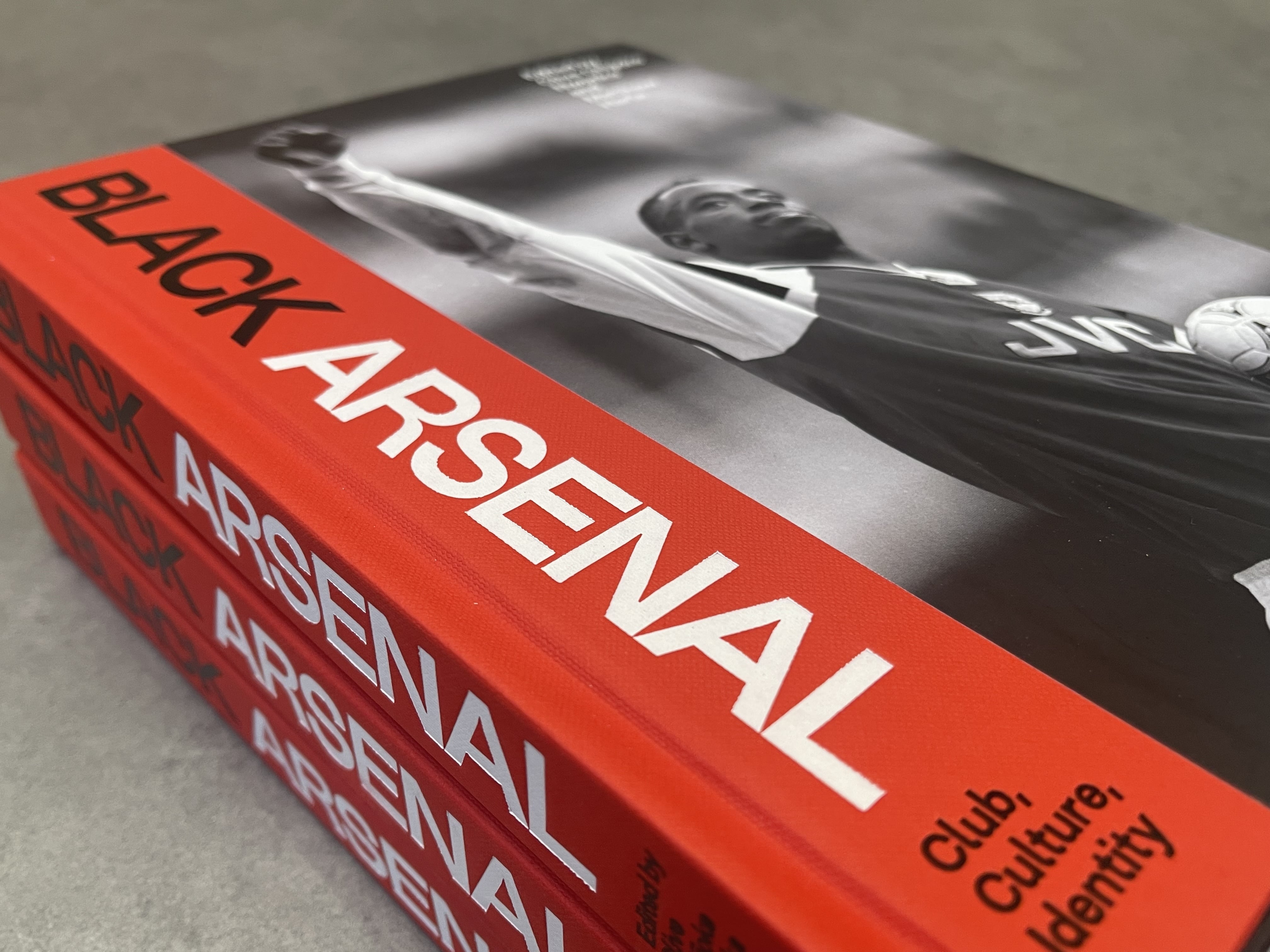
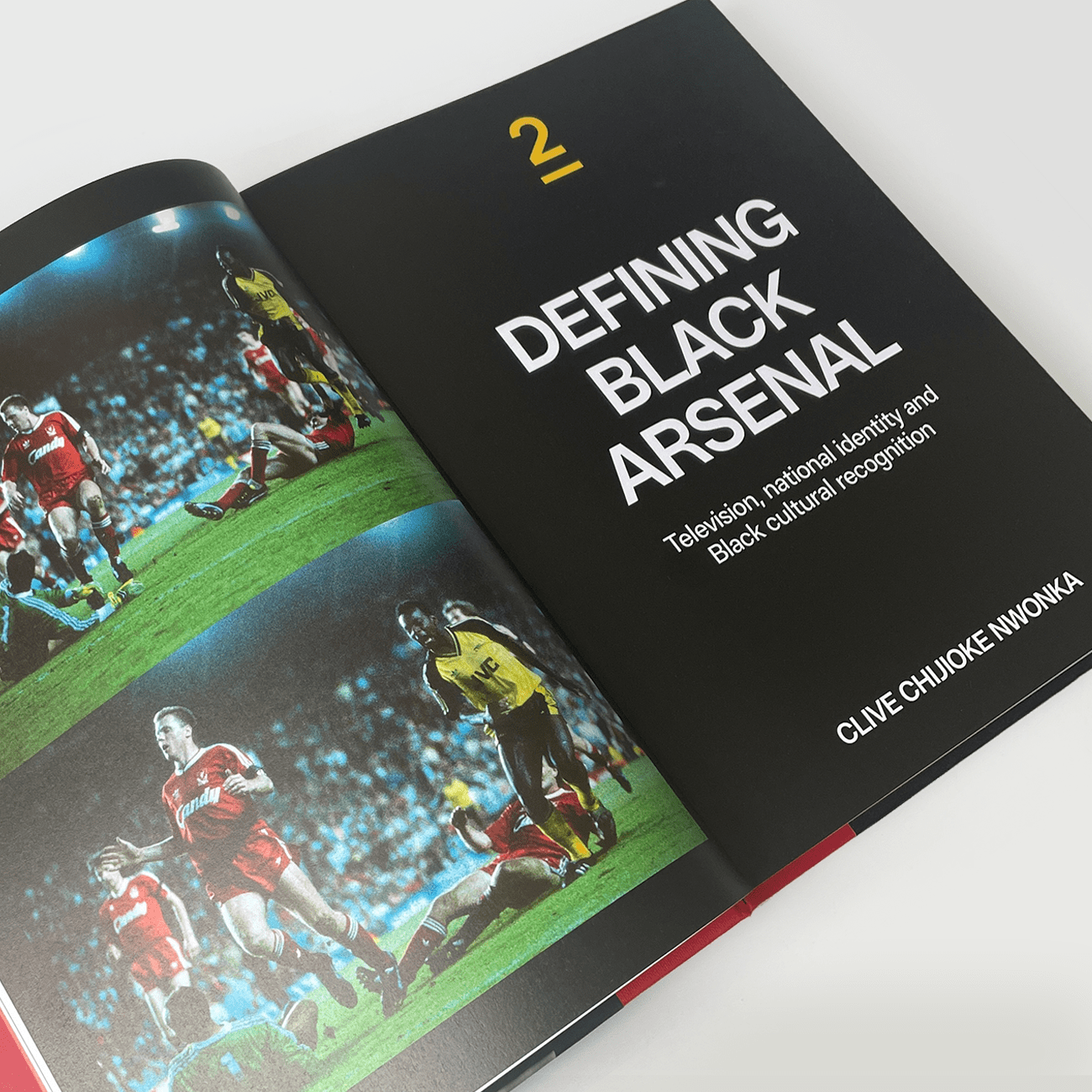
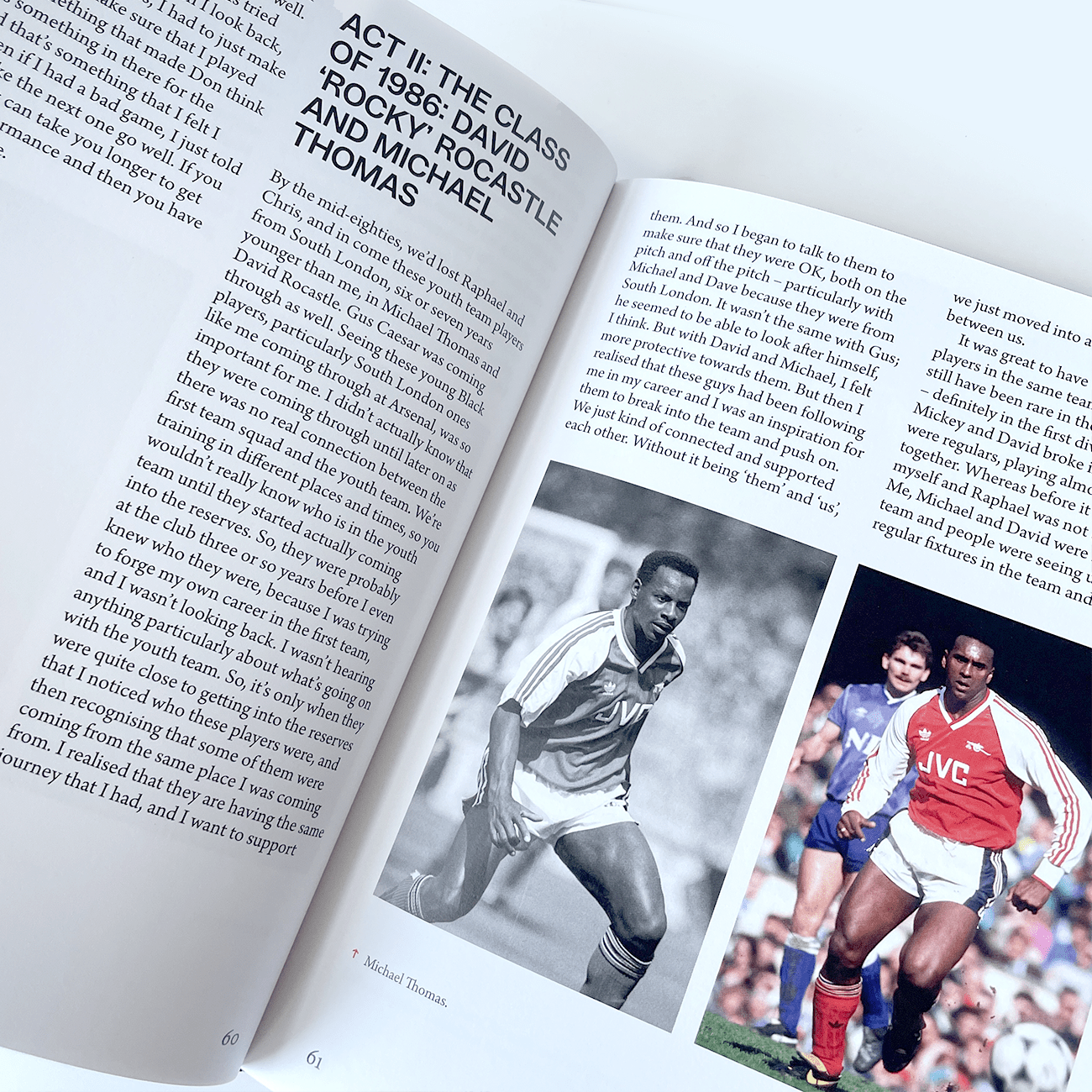
Blame space limitations for only one chapter being dedicated to Arsenal’s coveted football jerseys, aka SoccerBible’s specialist subject. Nwonka left out three or four in total and chose to focus on how the 2022/23 ‘Jamaica’ pre match shirt was designed and adopted as the unofficial Notting Hill Carnival uniform that year. More frequent kits drops make it harder to ascribe identity and cultural meaning and the academic identifies Arsenal’s 1990-1992 kits as a crucial turning point. “I associate the home kit with Black Arsenal more than everything else. You had the critical mass of Black players – Paul Davis, Michael Thomas, David Rocastle, Kevin Campbell, Ian Wright – and a swelling of Black Britishness in popular culture and everyday forms of expression,” he shares. “Think Soul II Soul, The Real McCoy on TV, Frank Bruno, Linford Christie... The kit embodies that complete moment.” Nwonka was glad to be consulted on Arsenal's 2024/25 LABRUM away kit. “I like the look of it but I’m Nigerian and not someone who needs to curate a Black ethnic experience through external things.”
When I point out how lucky Nwonka has been with the Black Arsenal book’s timing, teased for months but officially released on August 29th 2024 with Arsenal on an upward trajectory fighting for the title and undergoing a positive cultural reset, he agrees. “It’s been so serendipitous because I started researching it properly at the height of the ‘Wenger Out’ thing.” The same goes for our chat which took place days after the 2024 Notting Hill Carnival, Europe’s largest street festival led by Caribbean and African communities. We attended on different days but both spotted Arsenal football shirts in the crowd as usual– one indicator of how (Black) Arsenal has seamlessly transcended football to take hold in culture and wider society. Another is the Arsenal cap I spotted in Esiri Erheriene-Essi’s painting The Birthday Party (2021) at the superb Kunstmuseum Basel exhibition When We See Us. Boxing fan Nwonka deviating from aligning football players with Black Arsenal to salute boxer Michael Watson in his favourite chapter and Anamik Saha’s ‘Black Arsenal and British Asians’ chapter are others.
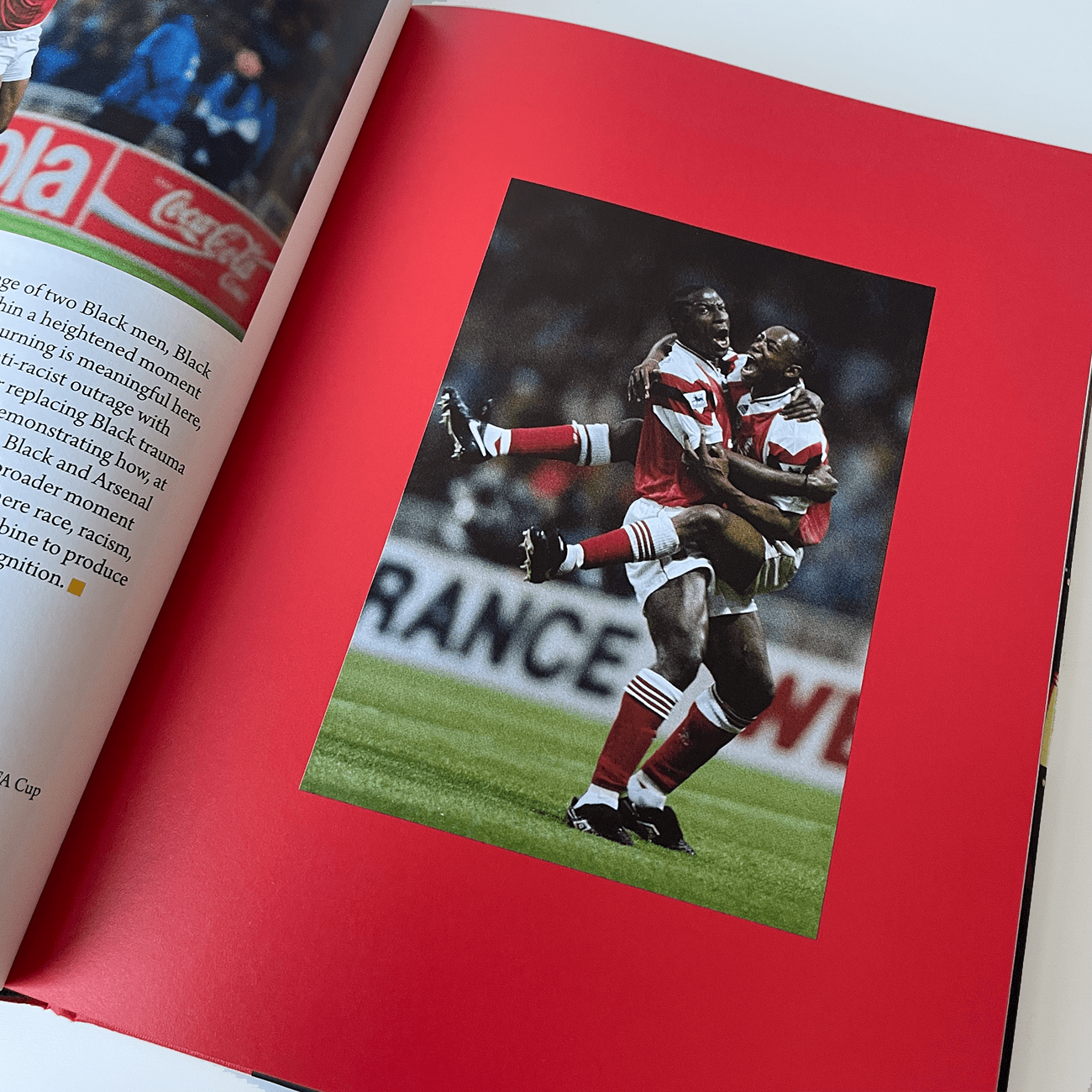
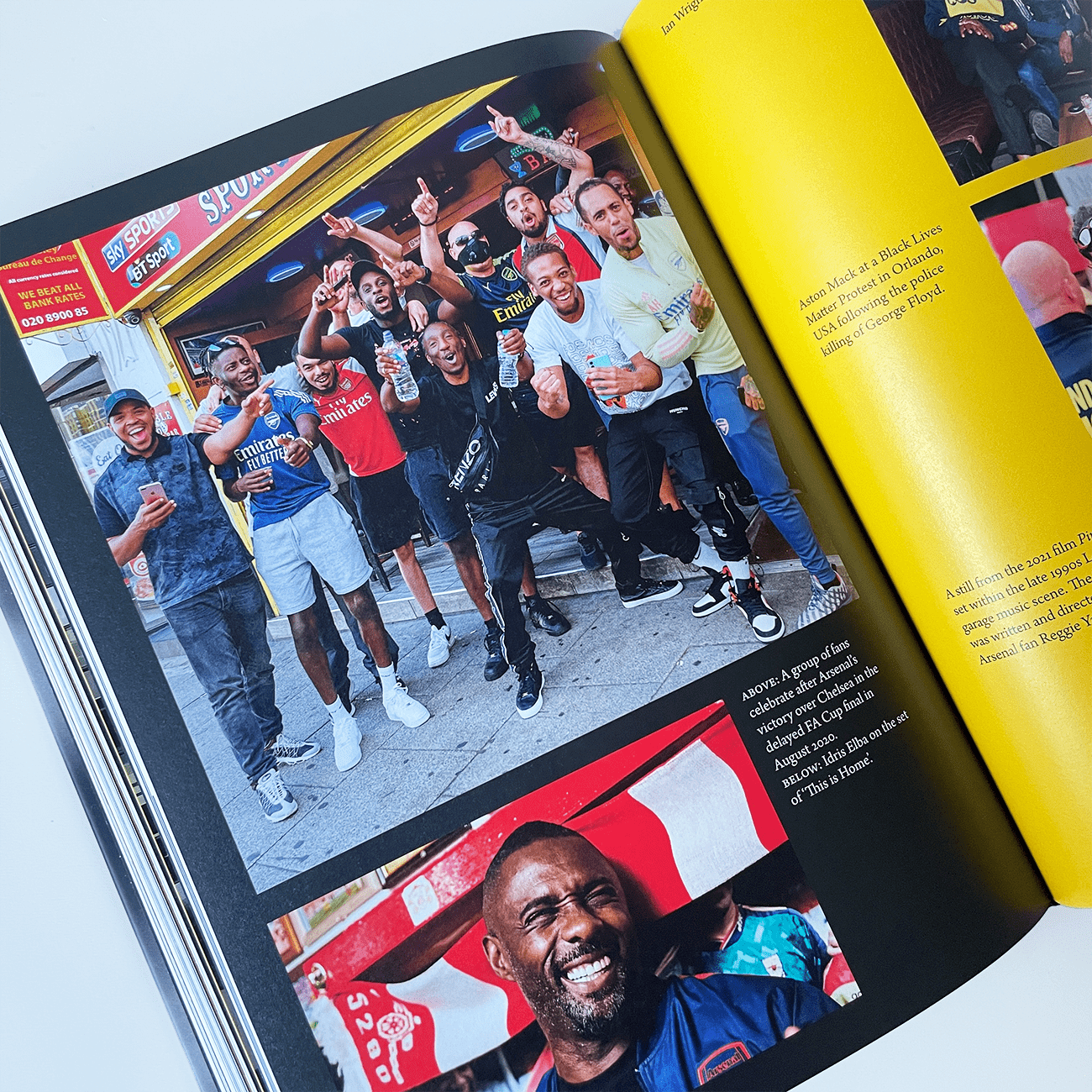

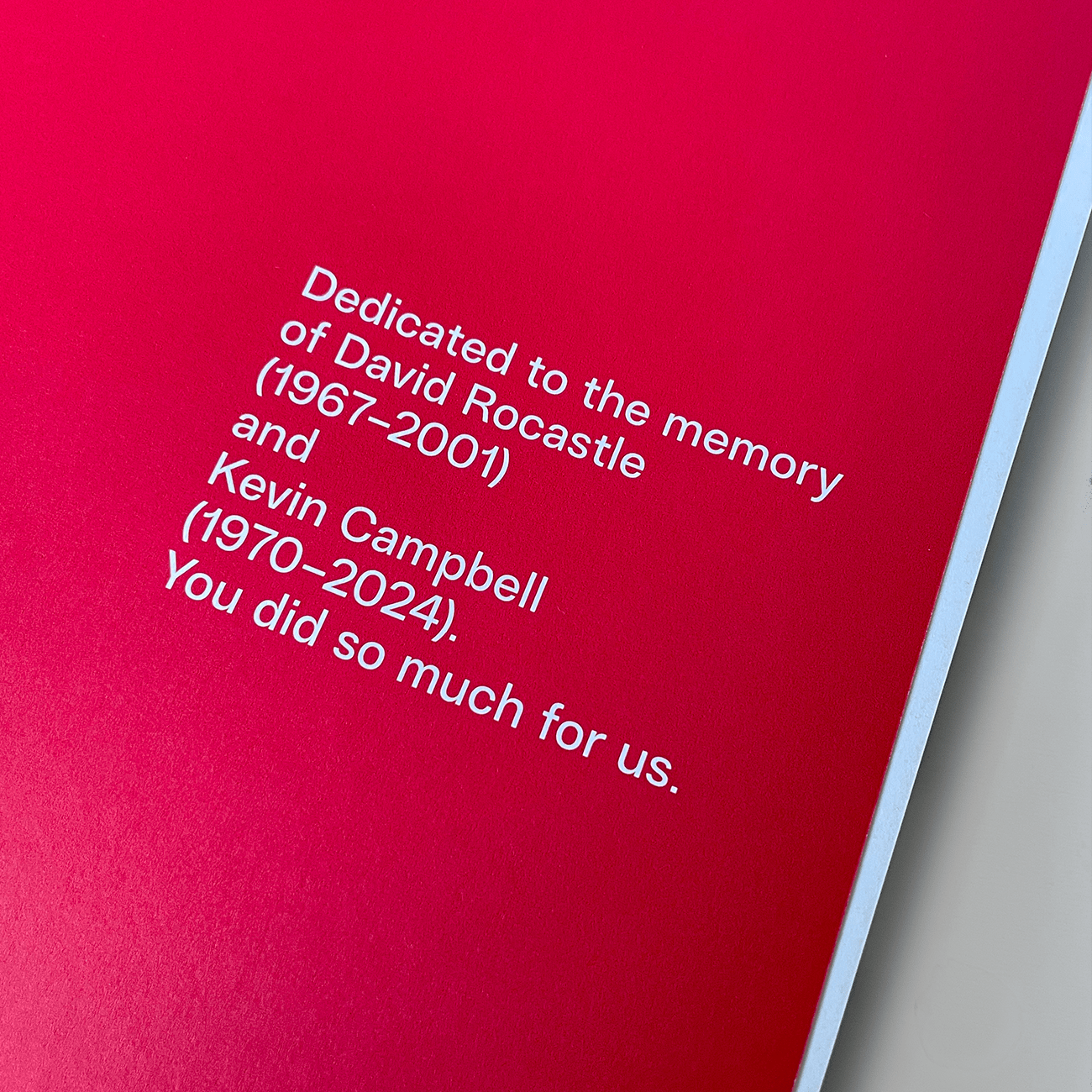
Feedback on Black Arsenal has been positive, to Nwonka’s relief, and celebratory launch events packed. Could there be a Black Chelsea, Black Liverpool, or Black [insert your club] book next? Nwonka doesn’t think so. “No other club can offer an example of their connection to the Black community or the Black community's connection to them beyond talking about players,” he asserts.“There's no manifestation beyond the actual terraces, whereas what fascinated me about Arsenal begins from there, but spirals out to different kinds of cultural experiences and manifestations.” Do you concur? The pride the Black Arsenal book exudes as it traces the club’s unapologetic diversity most powerful and palpable if you see yourself reflected. Black people and marginalised communities in football thrive in North London, rather than just surviving elsewhere, is a key takeaway.
There’s no echo chamber, with commenters reeling off their club’s Black players (proving the Nwonka's stance) or stressing that they don’t see race (a privilege that isn’t really relevant here) on X and Reddit threads. As this book was devised by a Black man, only a nitpicker would call out the overly male slant that reflects the current reality of the game. With a Southbank Centre talk chaired by Musa Okwonga planned in October (Black History Month), a documentary in the works, and hopefully a talk at African Caribbean bookstore New Beacon Books soon, Nwonka is spreading his Black Arsenal findings further and encouraging more people to engage. Does it matter if you’re an Arsenal fan? Not if you believe football is for all.
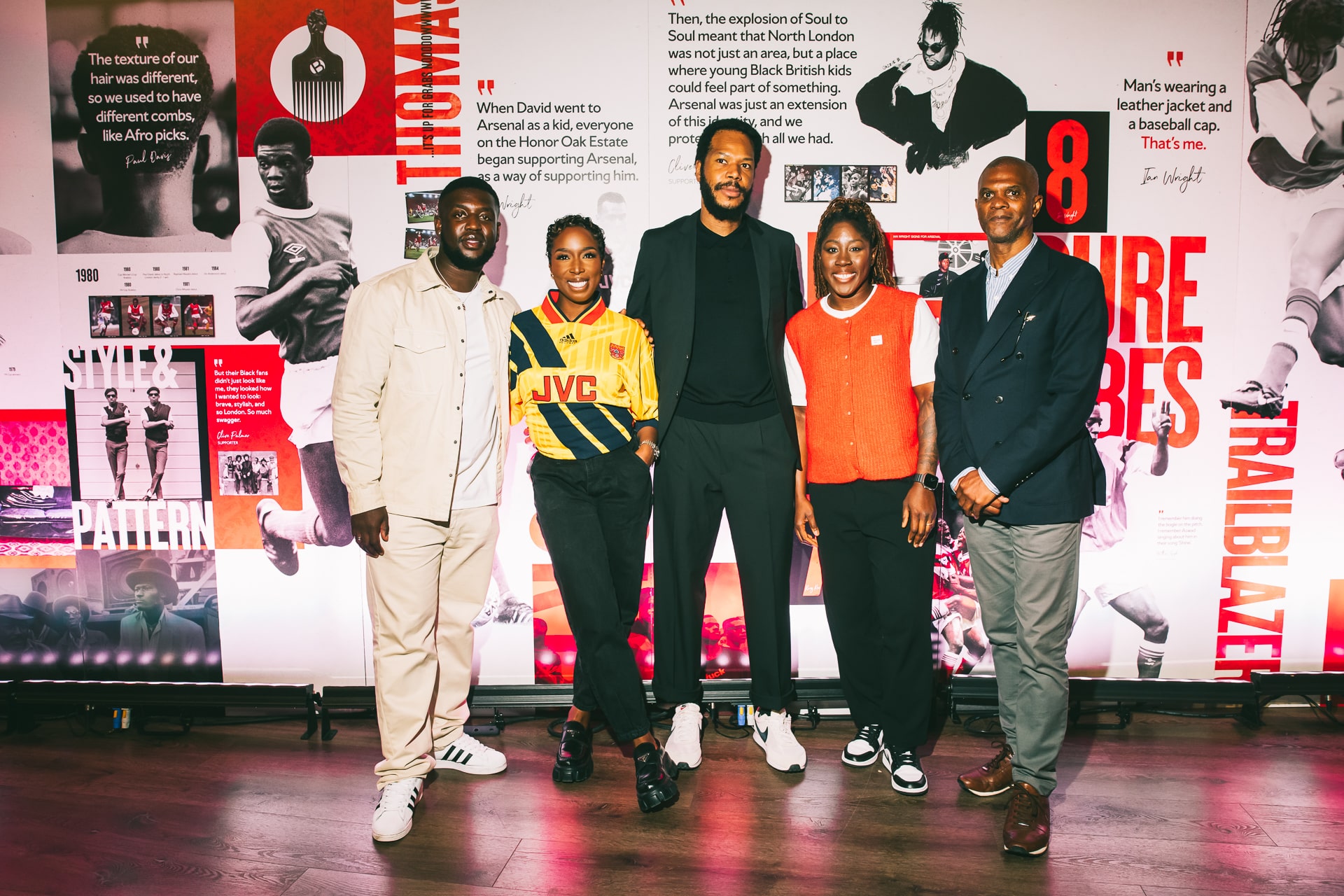
Celebrating Black Arsenal at the Emirates
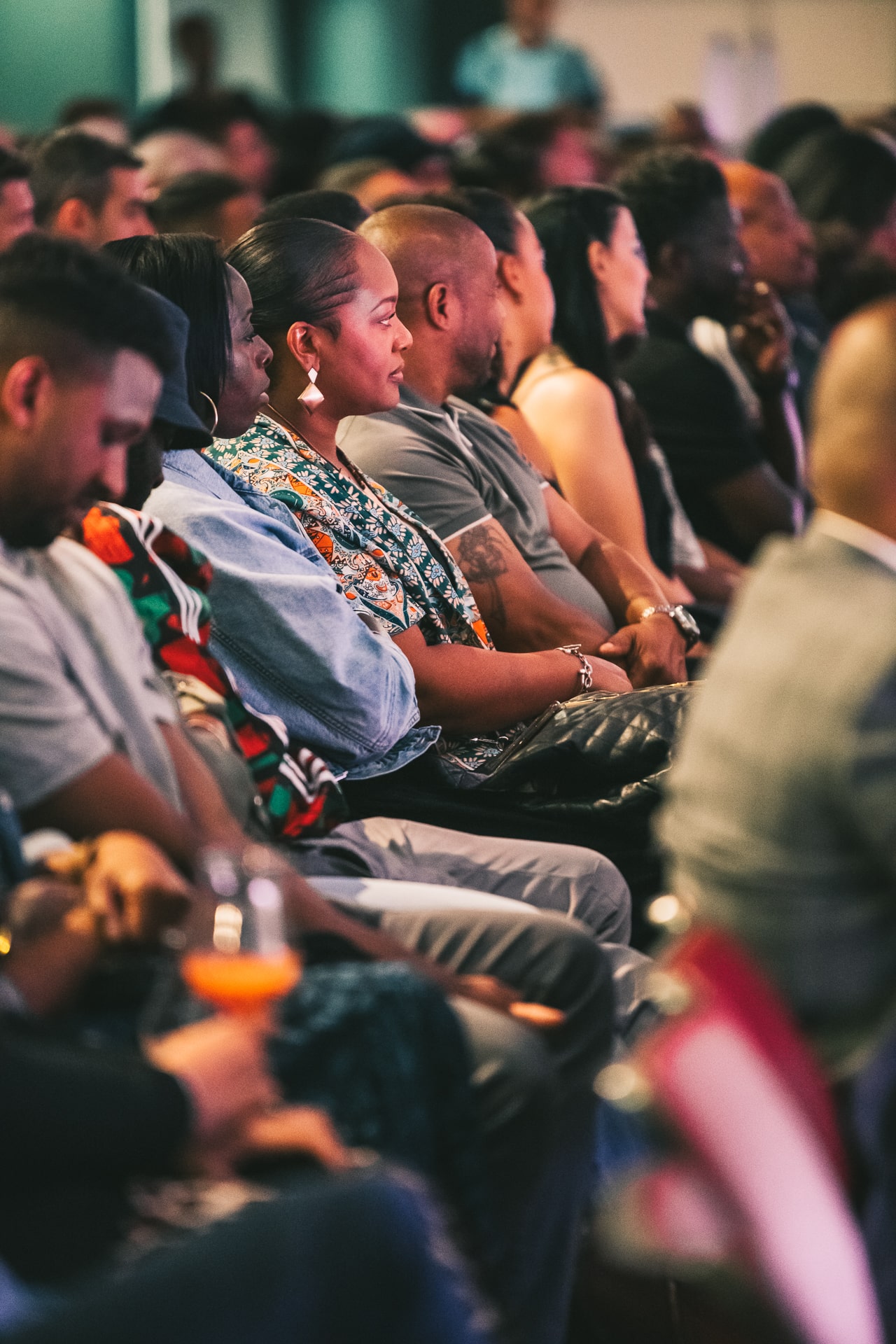
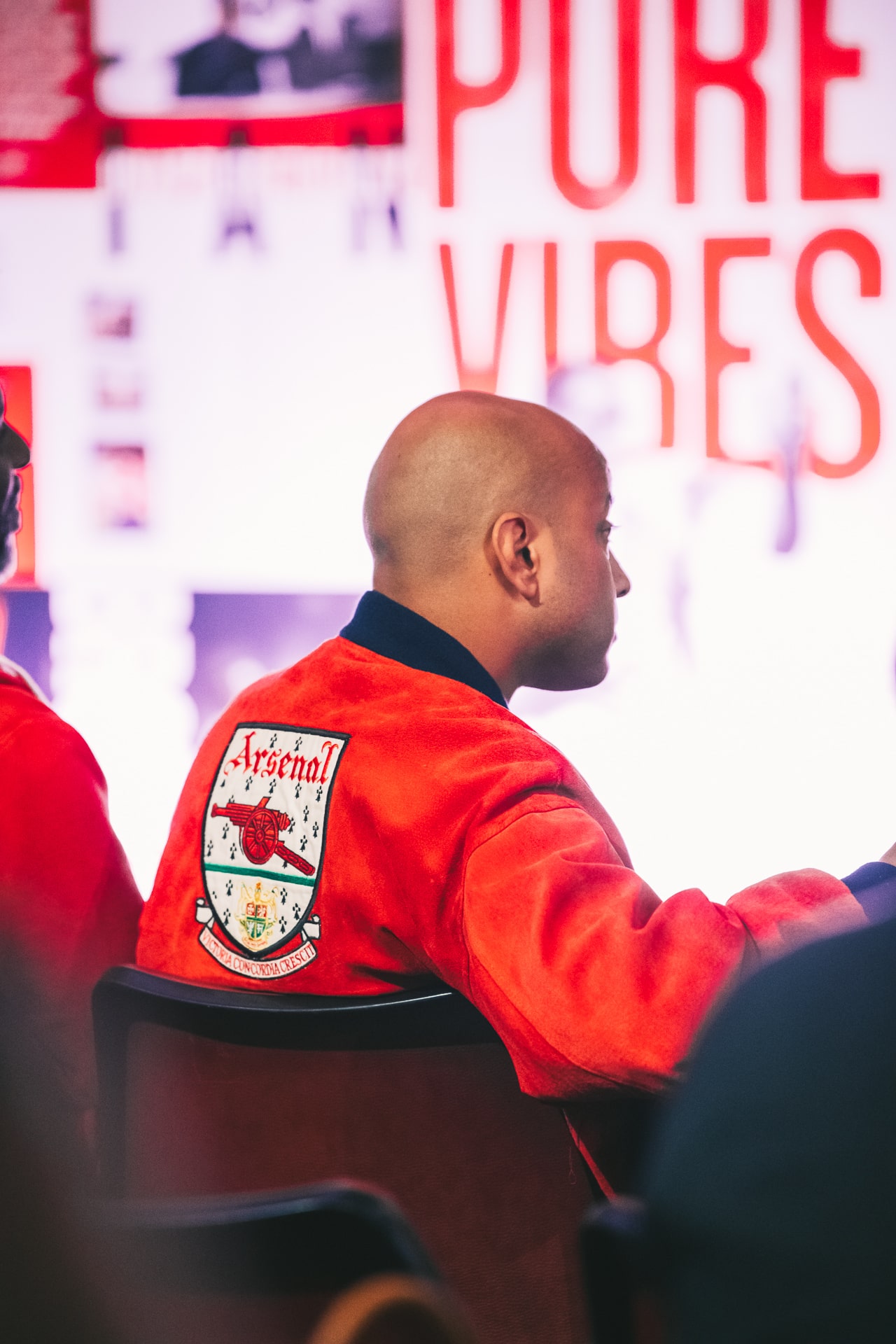
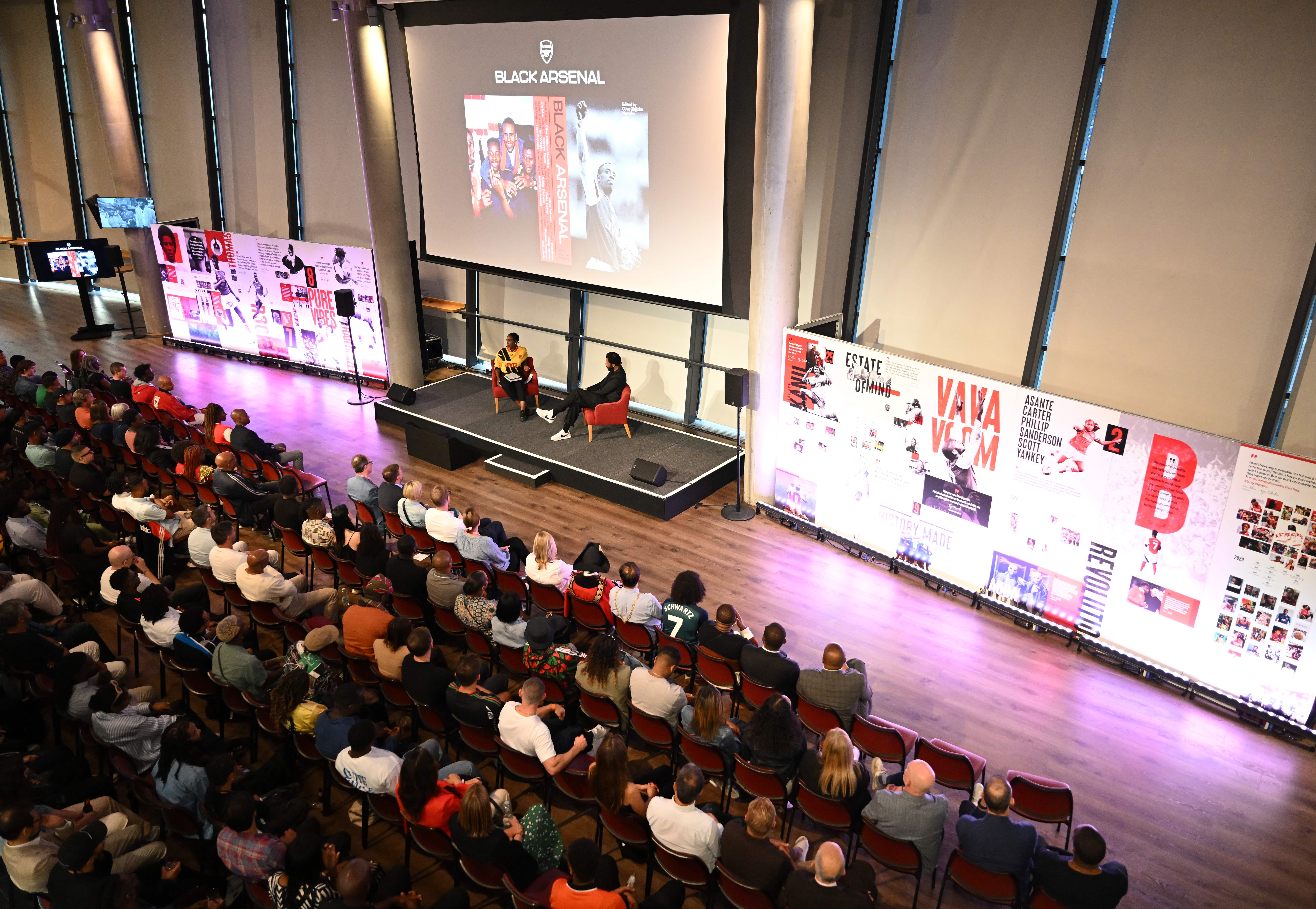
Black Arsenal is now available for purchase at major bookstores and online retailers.
Images courtesy of Dr Clive Chijioke Nwonka and Arsenal
